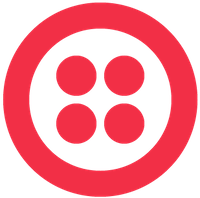
Phone calls are an exceptionally valuable lead type, and the advertising that contributes to motivating phone calls is valuable. Being able to attribute advertising to motivating a call allows marketers to more intelligently manage ad spend. The Facebook Conversions API represents an opportunity to facilitate such attribution for an advertiser’s Facebook ad spend, and also to put those signals to work with conversion optimization and building custom audiences.
Phone calls are way better than form fills
Others have reported it, and we see it in our own customer data. Lead forms convert prospects at a rate of between 2% to 5%, compared to phone calls at 20% to 40% (business model dependent, of course). No one needs help with that math. Only physical store visits rival the productivity of phone calls. The importance of phone calls is magnified in a business environment where in-store visits are still muted by COVID-19 (no mask required for a phone call).
Recording calls in ad platforms
There are many dedicated vendor solutions for call tracking in general (CallTrackingMetrics, DialogTech, CallRail, etc.). Some ad platforms themselves, like Microsoft Ads + Google Ads, offer solutions for recording call conversions directly in their platforms. While Facebook does not offer a specific call conversion solution, they do offer API access to their systems that can be used to send call signals. Below is a simple, cost effective solution for exposing call lead signals to Facebook using solutions from Twilio and Zapier.

A Twilio phone number to route the call and start the process
This approach calls for exposing call signals to Twilio. Do this by replacing the main phone number on the business website with a static phone number from Twilio (local or toll-free phone numbers). If preferred to keep the main number listed on the business website, coordinate through the related telecom carrier to have the main number routed through a Twilio phone number.
When configuring the number at Twilio, do two things:
- Configure it to transfer inbound calls to the destination business phone number.
- Configure it to send “call status changes” HTTP events to the webhook URL provided by Zapier (see below).
When a call is connected to the Twilio phone number, in addition to connecting the caller to the business phone number, Twilio will also notify Zapier of the call (via webook). This allows use of the power of Zapier to relay those signals to any of the third party systems to which their platform can connect.

Zapier to push signals to Facebook
In this scenario, we use Zapier to send these call signals via their Facebook Conversions integrations. When configuring Zapier to process a call made to a Twilio phone number, Zapier will provide a “Webhook URL for Twilio”. Use this URL to setup a Twilio CallBack URL. Per Zapier instructions, “Log into Twilio and visit your incoming numbers page, edit the number you want to trigger on, and paste the below URL into Call Status Changes. Click save!“
Zapier will allow passing Twilio call activity as a Facebook standard event via the Facebook Conversions API (CAPI). Events sent via CAPI are treated by Facebook as if they were sent via the pixel. This means the events can be used to drive conversion optimization, attribution reporting for existing campaigns that may have influenced the event, and to build custom audiences (including lookalikes).
When configuring Zapier to send the event via CAPI, send the caller’s phone number, and the city & state associated with their phone number. Facebook requires all personal data is hashed for privacy before sending via CAPI – which Zapier handles automatically. CAPI requires sending at least one of the possible user_data keys (e.g., email, phone, first name, last name, etc.). The more that are sent, the greater the chance that Facebook can match the call to a Facebook user account.

Custom conversions & audiences in Facebook put call lead signals to work for your business
Zapier allows passing Twilio call activity as Facebook standard events, or custom events. For example, if Twilio calls are sent as “Lead” Facebook standard events, it is wise to also populate a separate object property to designate the event as coming from Twilio (e.g., set the “content_category” object property value to “twilio-call”). This will allow configuring a Facebook custom conversion to differentiate Twilio call “Leads” from standard website form fill “Leads”.
Because CAPI Twilio call based Facebook events are treated like pixel delivered events, they can be used as “conversion events” driving Facebook conversion optimization algorithms (not so for Facebook offline events) to find more Facebook users that are likely to call. These same events can drive population of custom audiences, and lookalikes based on those custom audiences, for rich ad targeting opportunities.
What about ITP?
Apple recently announced Intelligent Tracking Prevention (ITP) mechanisms will be turned on by default in iOS 14, iPadOS 14, and Safari 14. That’s a big deal. Because the above solution & the Facebook Conversions API in general do not require cookie values or URL click IDs to work, ITP does not get in the way of this solution sending call signals to Facebook. With ITP and related cookie-based tracking disintegration on the increase, solutions like this become even more important for advertisers to be able to intelligently manage ad spend by attributing valuable user actions to the Facebook campaigns that helped motivate them.
In an ITP influenced digital ecosystem, Facebook’s identity platform and tools like the Conversions API represent a meaningful strategic advantage.